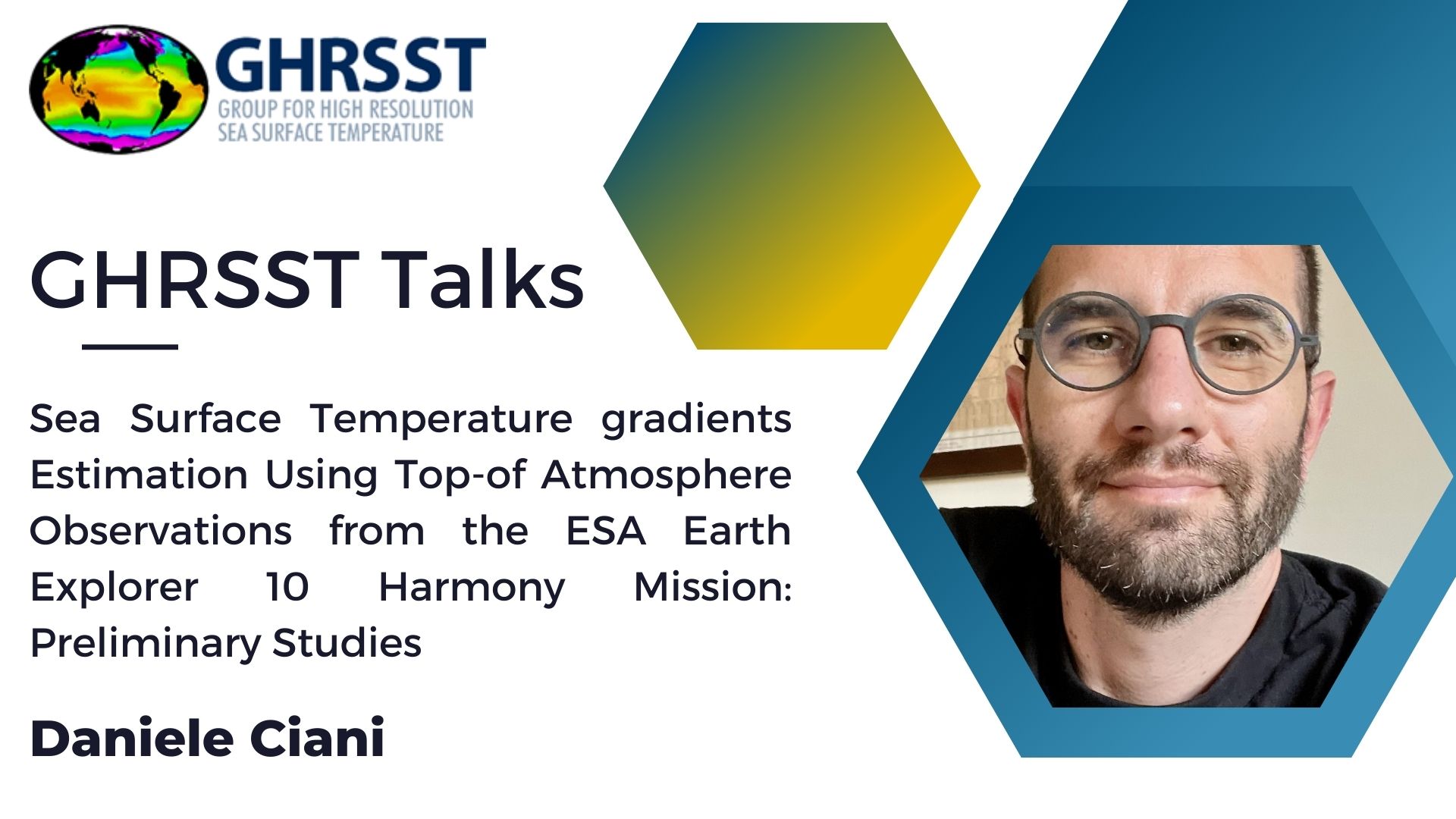Temperature Gradients Estimation Using Top-of-Atmosphere Observations from the ESA Earth Explorer 10 Harmony Mission: Preliminary Studies
3 August 2023, Rome, Italy – Dr. Daniele Ciani presents his recent publication, “Sea Surface Temperature Gradients Estimation using Top-of-Atmosphere Observations from the ESA Earth Explorer 10 Harmony Mission: Preliminary Studies”.
In the latest GHRSST Talk, Dr. Daniele Ciani, Researcher at the National Research Council of Italy, took the GHRSST stage.
Dr. Ciani presented his and colleagues recently published paper on preliminary studies about the retrieval of sea surface temperature gradients in the context of the 10th satellite mission developed by the European Space Agency – Harmony. The study explores preliminary investigations of the potential of using top-of-atmosphere observations acquired from the Harmony Mission to estimate sea surface temperature gradients.
Equipped with a synthetic aperture radar (SAR) and a thermal infrared radiometer (TIR), the Harmony Mission’s instruments takes center stage in the research by Dr. Ciani and colleagues. Their study focuses on the capabilities and insights offered by the TIR specifically.
For Dr. Ciani, the Harmony Mission strikes a chord of intrigue because it will provide simultaneous observations of sea surface roughness, wind stress, surface currents, direct measurements of surface currents, sea surface temperature, as well as information related to clouds. The simultaneity of sea surface temperature and surface stress measurements at high resolution that the Harmony Mission offers makes it very novel. Moreover, these observations holds significance for climate studies, as it promises a better understanding and ability to parametrize all processes that regulate air-sea interaction.
We dive into the key points presented during Dr. Ciani’s GHRSST Talk.
Payload and Strategy
The primary payload consists of a synthetic aperture radar (SAR), while the secondary payload, of particular interest in this discussion, is a thermal infrared radiometer (TIR). The challenge is to optimize the computation of thermal gradients in the presence of radiometric noise from TIR, which is an essential step for meaningful climate studies.
Addressing Co-Registration Issues
The study aims to minimize issues arising from co-registration discrepancies between different infrared channels. Such misalignment can lead to inaccurate sea surface temperature retrieval and subsequent gradient estimation. The approach involves using information from a single channel to counteract these effects.
Analysis from Existing Data
The analysis leverages existing data from the Sentinel-3 SLSTR sensor and the Meteosat SEVIRI sensor. Researchers relied on radiative transfer models and analytical studies to fine-tune the computation process for sea surface temperature gradients. An emphasis is placed on optimizing the accuracy of gradient estimates.
Optimizing Gradient Computation
The presentation highlighted the optimization of thermal gradient computation. The challenge lies in addressing the inherent radiometric noise of the Harmony thermal infrared payload. Analytical studies were performed to evaluate different gradient estimation methods, particularly focusing on their effectiveness in handling noise.
Conclusions and Future Prospects
The studies presented reveal how the team is contributing to the development of ESA’s Earth Explorer 10 Mission, particularly in estimating sea surface temperature gradients. Existing data from SLSTR and SEVIRI sensors showcase the viability of brightness temperature data in locating gradients accurately. The presentation also introduces a guideline for gradient computation under high radiometric noise scenarios. While progress has been made, challenges related to cloud presence and coastline proximity remain to be tackled.
Acknowledgments
Dr. Ciani extends acknowledgments to his colleagues Rosalia Santoleri and Flavio Mariani for their support and insightful discussions on the Harmony TIR payload characteristics.
For more in-depth information, you can read the published paper from 2023 or watch the full GHRSST Talk online.
Ciani, D.; Sabatini, M.; Buongiorno Nardelli, B.; Lopez Dekker, P.; Rommen, B.; Wethey, D.S.; Yang, C.; Liberti, G.L. Sea Surface Temperature Gradients Estimation Using Top-of-Atmosphere Observations from the ESA Earth Explorer 10 Harmony Mission: Preliminary Studies. Remote Sens. 2023, 15, 1163. https://doi.org/10.3390/rs15041163

